Death Valley National Park, located in southeastern California, reached a scorching 130 degrees Fahrenheit (54 degrees Celsius) on August 16, 2020, marking the hottest temperature ever recorded on Earth. However, a brutal heatwave and drought in the western United States pushed Death Valley to the same blistering temperature once again on Sunday, July 11, 2021. It’s like frying an egg!
In July 1913, Death Valley set an unofficial temperature record of 134 degrees Fahrenheit, with summer temperatures frequently exceeding 100 degrees Fahrenheit (37.7 degrees Celsius). The wonders of Death Valley do not end with the heat. It is the lowest and driest area in North America. Its lowest point, Badwater Basin, lies 282 feet (86 meters) below sea level. The valley also recorded no rainfall in both 1929 and 1953, with the longest dry spell lasting 40 months from 1931 to 1934, accumulating only 0.63 inches (1.6 cm) of rain.
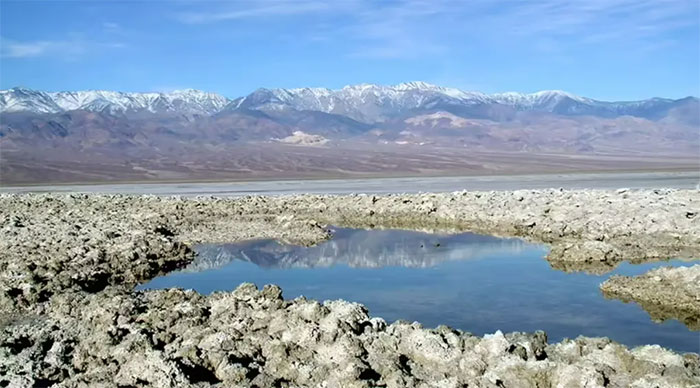
Death Valley set an unofficial temperature record of 134 degrees Fahrenheit.
The park spans a vast 3.4 million acres (1.3 million hectares) and features a fractured valley with a landscape that varies between desert, salt flats, sand dunes, and mountains. This diverse landscape is also the reason for the unbearable heat of the valley, which often reaches up to 120 degrees Fahrenheit (48 degrees Celsius). Vegetation is sparse, and the dry, clear air allows sunlight ample time to warm the entire desert. Heat radiates back and gets trapped in the deep valley, which in turn heats the surrounding mountain borders, causing the hot air to descend and become even hotter in a cyclic pattern of low and high elevations.
While the temperatures may sound harsh, Death Valley is often likened to being hotter than an oven. This colossal park—the largest national park in the contiguous United States—attracted 1.7 million visitors in 2019 alone. Below are some fascinating aspects that high temperature headlines alone cannot convey about this incredible natural wonder.
1. Surprisingly Colorful Death Valley
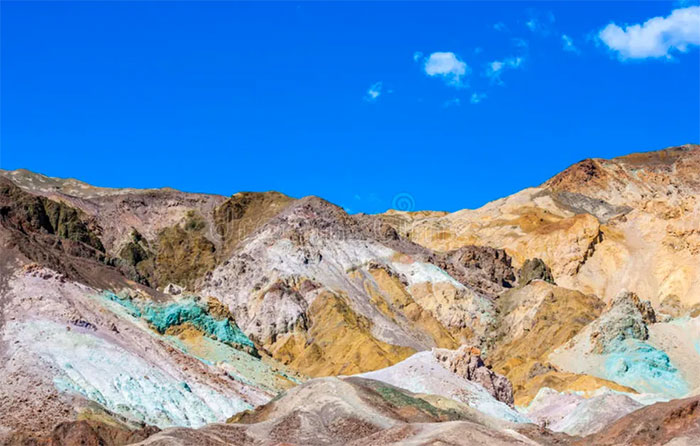
Artist’s Drive – a colorful mountain range that looks like spray paint in Death Valley.
The sunrises and sunsets paint a warm-colored picture for this desert, but the colors of Death Valley are not just created by these scenic views. Artist’s Drive—a 9-mile (14.4 km) stretch of mountains with colors resembling spray paint—is the result of the valley’s wild and stunning geology.
Shades of pink, purple, turquoise, and blue are the result of the oxidation of metals in the Black Mountains of the valley. These colors are most vivid on the Artist’s Palette, which not only creates a beautiful canvas but also serves as evidence of Death Valley’s violent volcanic history.
2. A Thousand-Star Hotel
The sharp, clear night sky, largely free from light pollution, is one reason why Death Valley attracts star-gazers. According to Rachel Urban, founder of Bindlestiff Tours, which organizes small group adventures in Death Valley, this is one of the park’s most enchanting features.
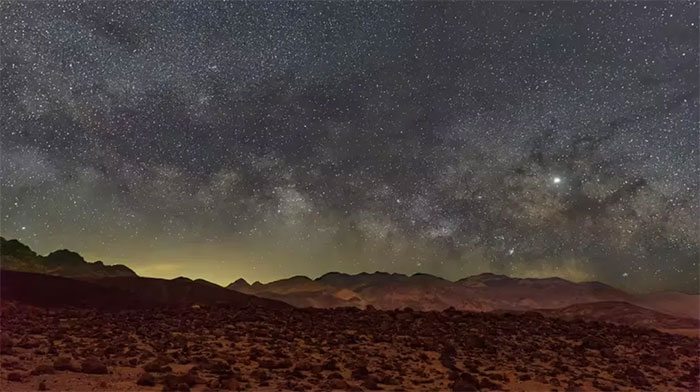
Anyone can see the Milky Way clearly on a night here.
Death Valley is a certified “thousand-star hotel.” It is far enough from any light pollution to become a haven for astronomers. Anyone can see the Milky Way clearly on a night here. To celebrate these starry nights, the park hosts an annual Night Sky Festival, featuring guided hikes, astrophotography meetups, star parties, and talks with park rangers.
3. Death Valley Resembles Science Fiction
Just considering the landscape of Death Valley, it looks like the setting for a science fiction film—perhaps that’s why the producers of Star Wars filmed parts of Episode IV and Episode VI here. But its surreal geological features go beyond human imagination. At Eureka Dunes, a 3-mile (4.8 km) stretch of California’s tallest sand dunes, the sand can actually “sing.” According to the National Park Service, when the sand slips down the tallest dunes, you can hear a sound reminiscent of a pipe organ or a drone.
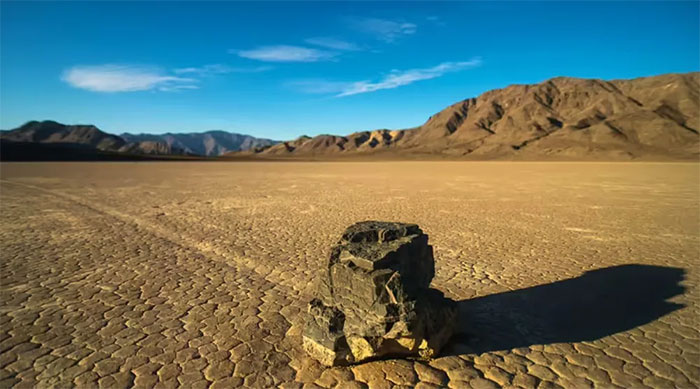
The moving rocks in Death Valley.
Not to mention the strange sounds of movement in the “music” of the desert, where some rocks in Racetrack Playa move on their own, as rocks from nearby mountains break off and slide down into Racetrack—a dry lake bed in the northwest of Death Valley—leaving trails as they move.
Some of these rocks have traveled as far as 1,500 feet (457 meters) and are known as sailing stones. These are not pebbles; their sizes range from a few ounces to several hundred pounds. This phenomenon occurs when enough water and ice form in Racetrack Playa, allowing the stones to glide across the muddy bottom with the help of a light breeze.
4. Rich Flora and Fauna Thrive in the Heat
With a name like Death Valley, it’s hard to imagine any life thriving here, but surprisingly, it is home to a wealth of biodiversity. Death Valley is inhabited by over 1,000 plant species and more than 50 species of mammals, including bighorn sheep, coyotes, and prairie dogs. Bird species such as the common poorwill reside here year-round, and a unique species, the small blue devil fish, lives in a warm water area around 91 degrees Fahrenheit (33 degrees Celsius)—a geological system just outside the national park.
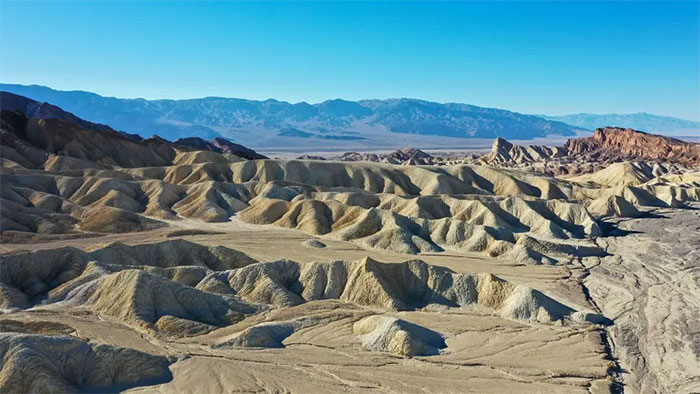
Death Valley is home to over 1,000 plant species and more than 50 species of mammals.
5. Safety is Essential When Visiting Death Valley
Experienced visitors recommend visiting Death Valley between November and April, when temperatures cool down to around 75 degrees Fahrenheit (23.8 degrees Celsius) in November and 64 degrees Fahrenheit (18.3 degrees Celsius) in December. Travelers in Death Valley are also urged to take precautions seriously, as it is easy to get lost in this vast park.
Do not rely solely on your GPS, as the mountain ranges can make it unreliable. Signals are often lost, including cellular service. Ideally, carry a map to know your location. If you are traveling during the hottest months of the year, drink plenty of water, seek shade, and bring electrolytes and salty snacks.


















































